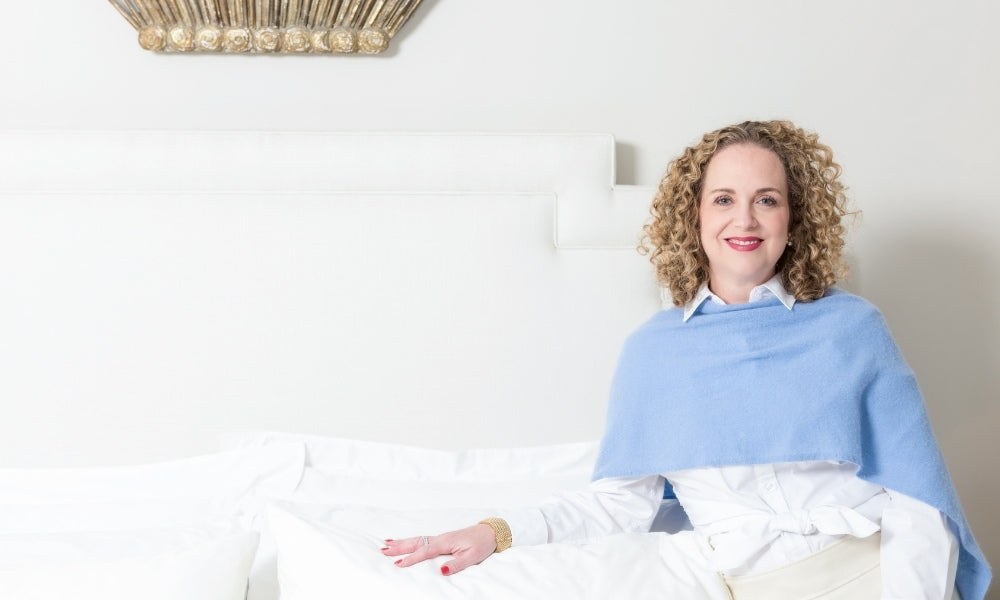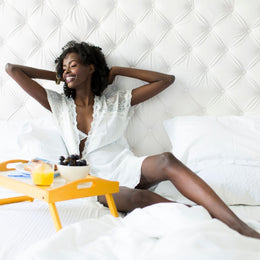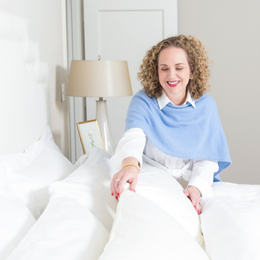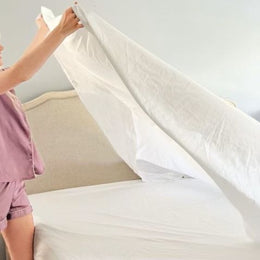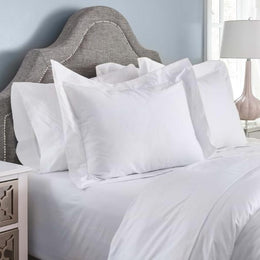Unfortunately, sometimes our busy lives impact our ability to sleep. Starting a couple of years ago, I found going to sleep and staying asleep was getting harder and harder. As a natural extension of not getting enough sleep, I constantly felt irritable and forgetful. So, I started reading about sleep and it turns out that consistent lack of sleep can cause brain damage. I knew then, I had to start getting enough sleep.
A Recipe for Getting Better Sleep
Each person should have a mental recipe for getting a good night’s sleep. For me, it’s a quiet, cool, dark room and a bed with dreamy bedding. It’s also a light-weight nightgown with long sleeves. As the final item, I fall asleep best on my left side, facing the edge of the bed. This is my recipe for good sleep and, while it may seem unique to me, it turns out many of the elements are universal. Here are a few things you may want to include in your recipe for good sleep.
Low Temperature and Little or No Ambient Light
According to a number of sleep scientists, sleeping in a cool, dark room helps promote better sleep. Because the human body’s temperature naturally lowers at night and then rises in the morning, a cool room lets the body know it is time to go to sleep. This cooling effect naturally triggers hormones that help us go to sleep and stay asleep. We recommend our 100% cotton percale sheets to keep you cool as you sleep, they are really the best sheets for hot sleepers. The 100% long staple cotton in our sheets wicks away moisture and lets it evaporate quickly, which help keep you cool and comfortable all night long. Plus the 500 thread count percale weave makes for really breathable sheets, also a key part of sleeping comfortably.
Similarly, a dark room also provides a natural signal that it’s time to sleep. A few things to try include dark curtains that block light from outside, as well as eliminating or reducing lights in the bedroom from alarm clocks, night lights, electronics, and other sources. They may seem like small lights but they can still disrupt sleep. If a nightlight is a must, consider using one that omits red light, which is less likely to disrupt sleep, or keep the nightlight in the hall or bathroom away from sleeping areas.
Consistent Bedtime
Your body recognizes your habits and adapts to them. Use this to help you sleep better. Try going to bed at the same time every night and getting up around the same time every morning. Over time, your body will get in the habit of going to sleep and waking up at these consistent times, making it easier to go to sleep and stay asleep.
Comfortable Bedding
There is nothing worse than an uncomfortable bed. Plus, part of sleeping in a cool room is the joy of piling on covers. I love the comfort of softly crisp cotton sheets, layered with a light blanket, and fluffy comforter, it’s like sleeping in a glorious puffy cloud. Also, many people are turning to weighted blankets to reduce physical stress and sleep more soundly, so the weight of layered bedding may also help promote sleep. And, if the room is cool as noted above, it’s easy to maintain a pleasant temperature, just fold the comforter down at bedtime if you get warm at night. I also like to have a separate blanket from my spouse. Like many of you, my spouse is generous to a fault when awake but once asleep, the covers are funneled off of me and onto the far side of the bed. Good news, adding a separate blanket or other bedding to your side of the bed is the perfect solution, allowing both of you to get a good night sleep without fighting over the covers.
Sleepwear
To paraphrase Oprah, regardless of the current clothing trends, know what looks best on you and wear it. Similarly, know what you sleep best in and put it on every night. I admire gorgeous nighties with spaghetti straps and fluttering short sleeves, but if my upper arms are cold I’m bound to toss and turn all night. Instead, I opt for a longer sleeve nightgown in a light, cool cotton fabric. Cotton wicks away moisture and lets it evaporate quickly, which help keep you cool and comfortable.
Sleep Position and A Calm Mind
Consider the position in which you go to sleep best (taking into account your doctor’s orders!) and try to use it consistently. We each have a sleeping position best for falling asleep and it may be different than what we need to stay asleep. According to Sleep.org, sleeping on your back is best for sleep, followed by sleeping on your side, with sleeping on your stomach coming in dead last. Here’s a link to their article on the best sleeping positions in case you want to read more.
When trying to go to sleep, try consistently visualizing something that makes you happy (but not excited!), to ease you away from the day’s worries and into sleep. I have had a lot of success with this method and visualize the same scenario each night (driving down a country road). If other thoughts and worries start creeping in, just recognize it and go back to your happy calm place.
Now that you have the pieces, you can use them to put together your recipe for how to get the best sleep and give it a try.
Best,
Elizabeth
